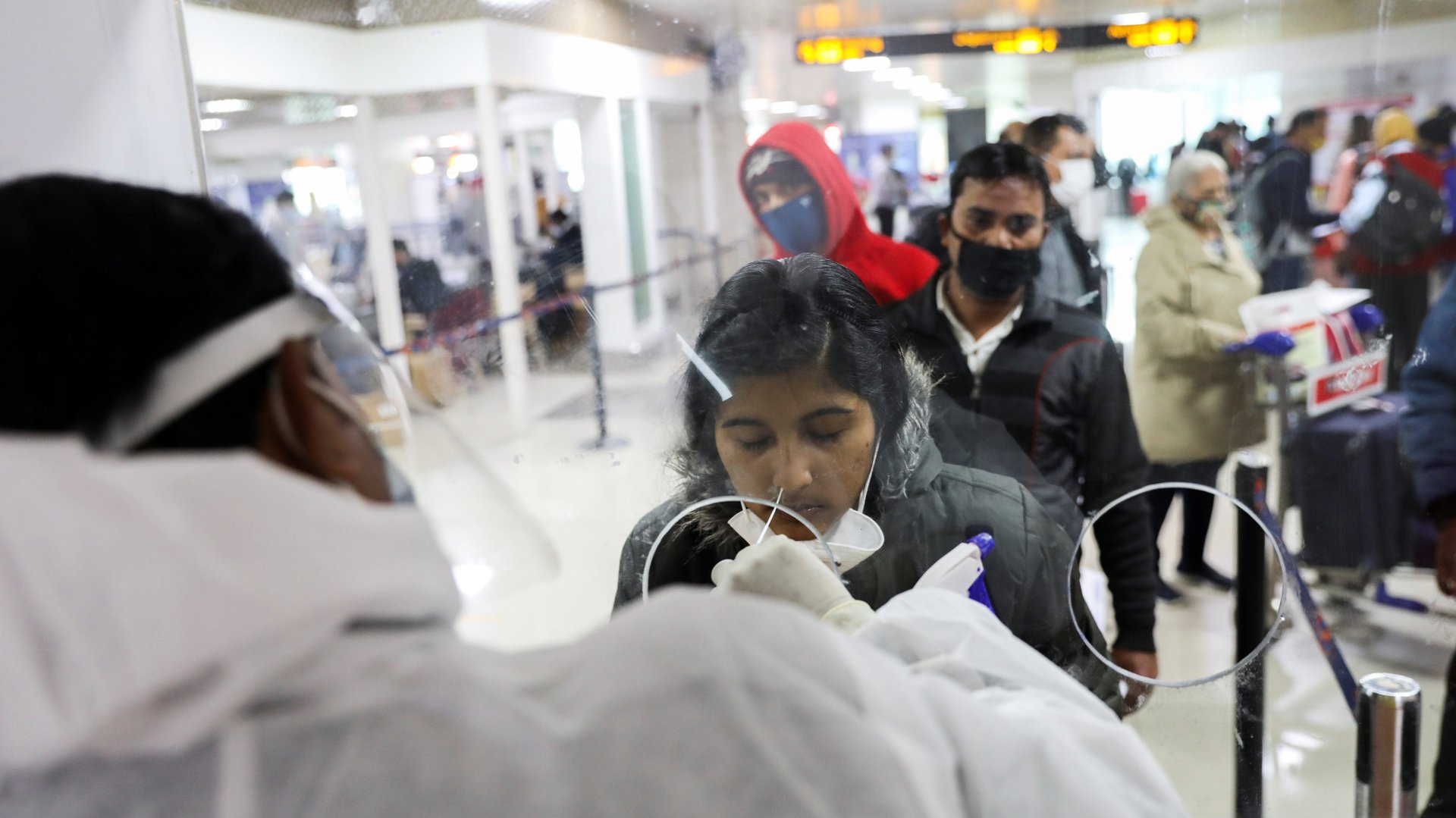Indian states are getting ready to battle a surge in omicron infections
A rising number of cases of the omicron variant in India have policymakers preparing for another potential covid-19 battle.


A rising number of cases of the omicron variant in India have policymakers preparing for another potential covid-19 battle.
In Delhi, new daily infections breached the 100 mark on Dec. 19 for the first time since June, and the test positivity rate has climbed to 0.2%. There are now 200 cases of the omicron variant in India, of which 54 are in Delhi.
Similarly, Mumbai reported 321 fresh cases on Dec. 19, the biggest spike in 39 days. While in absolute terms, the number remains low and hasn’t officially set off an alarm, the upward trend is a matter of concern.
Particularly so for Delhi and its surrounding region which experienced a devastating delta variant surge in April and May. According to the serological survey conducted in October, more than 97% of the city’s residents have antibodies for covid-19. Such levels of seropositivity are both a function of a large number of infections and that over 67% of its eligible population is fully vaccinated.
Omicron, according to the evidence available so far, can escape the protection provided by vaccines and immunity from past infections. Vaccines, though, may still remain highly effective in preventing hospitalisations and deaths. Booster shots have been shown to offer added protection, but India currently has no policy on additional doses.
Meanwhile, the number of cases has gradually risen, and if a repeat of the debacle last summer is to be avoided, preparations must begin now.
Avoiding a repeat of the delta wave
When the delta variant infections began to take hold in Delhi in April, the number of cases multiplied rapidly, going up in a few weeks from a little under 1,000 a day to 28,000 at its peak.
The health infrastructure, however, failed to keep up with the spread of the infection. Countless residents were left without hospital beds, access to oxygen cylinders, or even basic medication. It took the state government a couple of weeks to restart Delhi’s large covid-19 treatment centres, by which time the city was fully in the grips of a catastrophe.
This time around, chief minister Arvind Kejriwal has already begun consultations to manage surge capacity for healthcare infrastructure. Limited evidence suggests that most of the omicron cases may be mild, Kejriwal said yesterday (Dec. 20). His government, hence, will focus on strengthening home isolation, besides ensuring enough numbers of beds with oxygen.
Delhi now also has a colour-coded system to manage infections and trigger various emergency responses.
Getting ready for omicron
The four levels—yellow, amber, orange, and red—will be triggered based on various parameters like test positivity rate, the total weekly number of cases, and hospital bed availability.
The government will issue a yellow alert when the positivity rate remains above 0.5% for two consecutive days, there are 1,500 new weekly infections or 500 hospitalisations for oxygen in that week. None of those has happened in Delhi yet.
A key element to avoiding panic and chaos will be to keep Delhi’s control centre and helplines running, a function that was largely missing during the worst of the second wave.
Meanwhile, the municipal body in Mumbai restarted operations at its “jumbo” covid-19 centres two weeks ago, anticipating a surge and to quarantine foreign travellers. Maharashtra, of which Mumbai is the capital, and the southern state of Kerala have also witnessed high levels of infections, but their helplines and control centres ensured that cases were properly triaged.